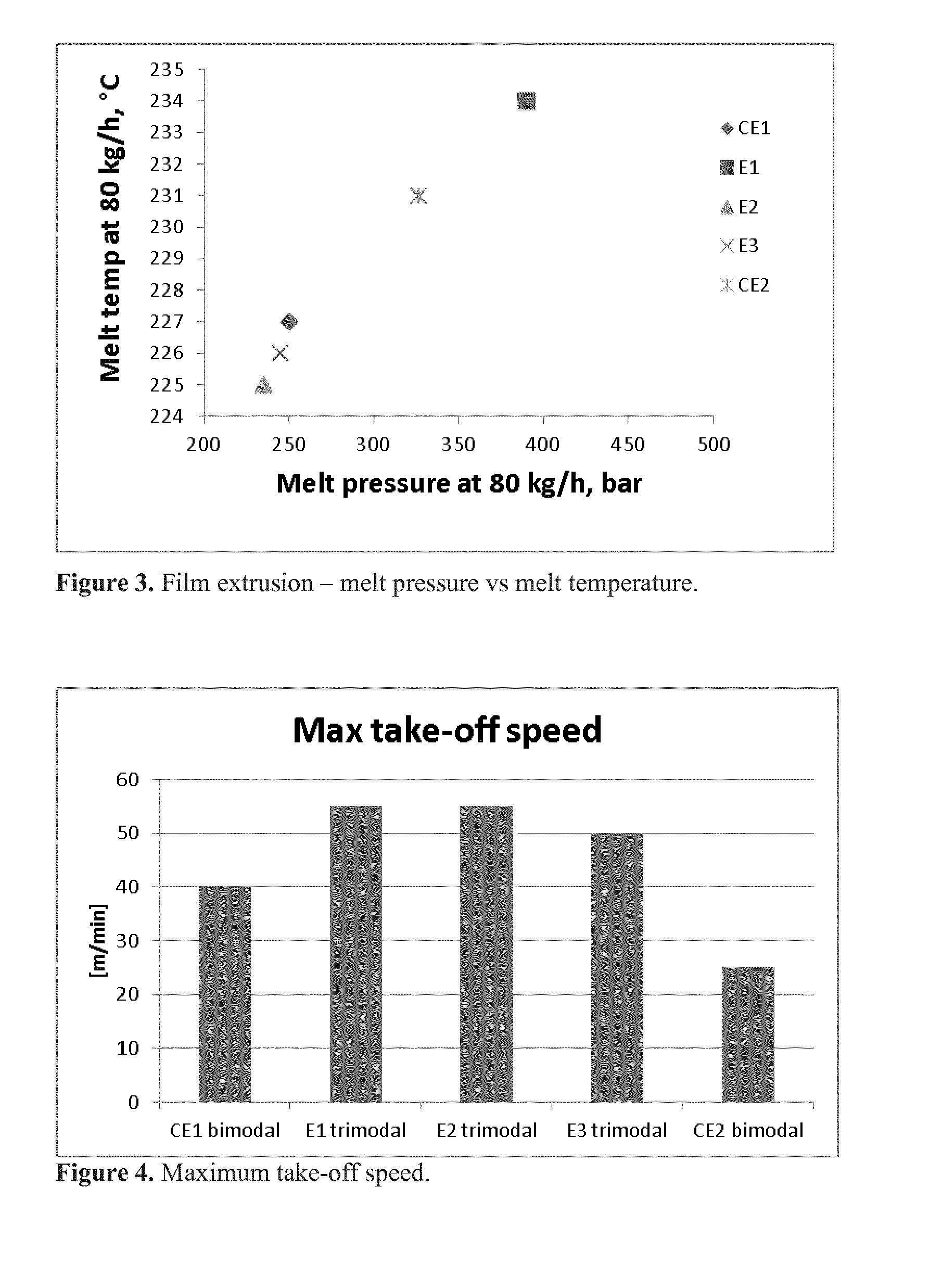Multimodal polymer
- Summary
- Abstract
- Description
- Claims
- Application Information
AI Technical Summary
Benefits of technology
Problems solved by technology
Method used
Image
Examples
example 1
Complex Preparation
[0186]87 kg of toluene was added into the reactor. Then 45.5 kg Bomag A in heptane was also added in the reactor. 161 kg 99.8% 2-ethyl-1-hexanol was then introduced into the reactor at a flow rate of 24-40 kg / h. The molar ratio between BOMAG-A and 2-ethyl-1-hexanol was 1:1.83.
Solid Catalyst Component Preparation:
[0187]275 kg silica (ES747JR of Crossfield, having average particle size of 20 microns) activated at 600° C. in nitrogen was charged into a catalyst preparation reactor. Then, 411 kg 20% EADC (2.0 mmol / g silica) diluted in 555 litres pentane was added into the reactor at ambient temperature during one hour. The temperature was then increased to 35° C. while stirring the treated silica for one hour. The silica was dried at 50° C. for 8.5 hours. Then 655 kg of the complex prepared as described above (2 mmol Mg / g silica) was added at 23° C. during ten minutes. 86 kg pentane was added into the reactor at 22 DEG C during ten minutes. The slurry was stirred for ...
polymerisation example 1
[0188]HDPE film polymers were prepared with the catalyst described above. Trimodal HDPE film lots were produced in a reactor train consisting of prepolymeriser, loop, GPR1 and GPR2, and bimodal reference target was produced without GPR2. The operating conditions are summarised below.[0189]The prepolymerisation was of conventional operation of mud feed system with dry catalyst and provides around 2 wt % of the overall polymer.[0190]The loop reactor provides an ethylene homopolymer with a target MFR2 of 350 to 400 g / 10 min. The MFR adjustment is done by adding Hydrogen as known. This component is typically 43 to 53 wt % of the polymer.[0191]GPR1 provides a high HMW copolymer component with C4 as a comonomer. It provides around 35 to 45% of the overall polymer.[0192]GPR2 is the UHMW copolymer (C4 as a comonomer), and is produced in the absence of hydrogen. It provides around 5 to 15 wt % of the polymer.
[0193]The process conditions and final polymer properties are summarised in Table 1....
PUM
| Property | Measurement | Unit |
|---|---|---|
| Density | aaaaa | aaaaa |
| Density | aaaaa | aaaaa |
Abstract
Description
Claims
Application Information
 Login to View More
Login to View More - R&D
- Intellectual Property
- Life Sciences
- Materials
- Tech Scout
- Unparalleled Data Quality
- Higher Quality Content
- 60% Fewer Hallucinations
Browse by: Latest US Patents, China's latest patents, Technical Efficacy Thesaurus, Application Domain, Technology Topic, Popular Technical Reports.
© 2025 PatSnap. All rights reserved.Legal|Privacy policy|Modern Slavery Act Transparency Statement|Sitemap|About US| Contact US: help@patsnap.com



